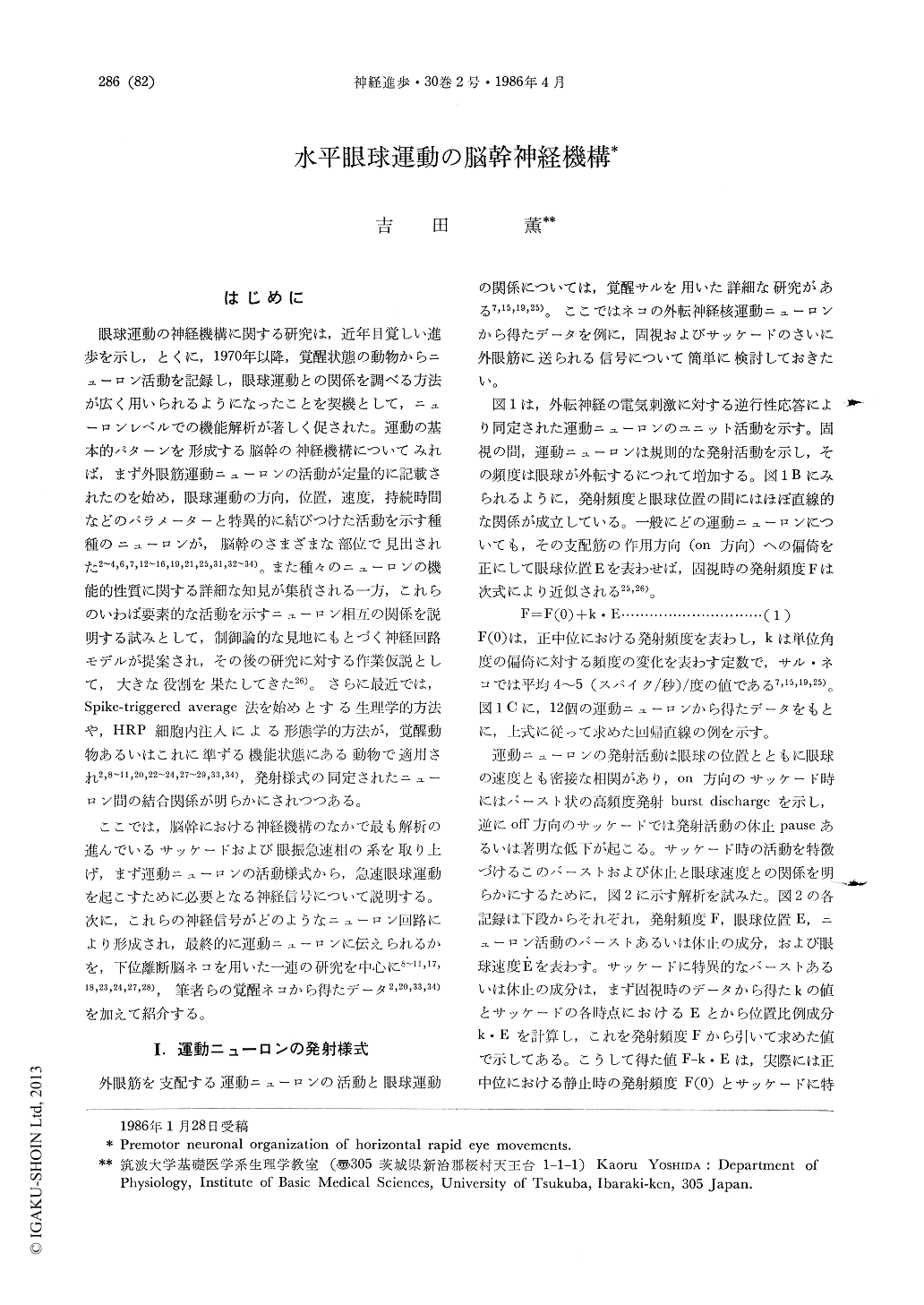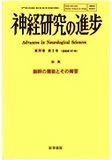Japanese
English
- 有料閲覧
- Abstract 文献概要
- 1ページ目 Look Inside
はじめに
眼球運動の神経機構に関する研究は,近年目覚しい進歩を示し,とくに,1970年以降,覚醒状態の動物からニューロン活動を記録し,眼球運動との関係を調べる方法が広く用いられるようになったことを契機として,ニューロンレベルでの機能解析が著しく促された。運動の基本的パターンを形成する脳幹の神経機構についてみれば,まず外眼筋運動ニューロンの活動が定量的に記載されたのを始め,眼球運動の方向,位置,速度,持続時間などのパラメーターと特異的に結びつけた活動を示す種種のニューロンが,脳幹のさまざまな部位で見出された2〜4,6,7,12〜16,19,21,25,31,32〜34)。また種々のニューロンの機能的性質に関する詳細な知見が集積される一方,これらのいわば要素的な活動を示すニューロン相互の関係を説明する試みとして,制御論的な見地にもとづく神経回路モデルが提案され,その後の研究に対する作業仮説として,大きな役割を果たしてきた26)。さらに最近では,Spike-triggered average法を始めとする生理学的方法や,HRP細胞内注入による形態学的方法が,覚醒動物あるいはこれに準ずる機能状態にある動物で適用され2,8〜11,20,22〜24,27〜29,33,34),発射様式の同定されたニューロン間の結合関係が明らかにされつつある。
ここでは,脳幹における神経機構のなかで最も解析の進んでいるサッケードおよび眼振急速相の系を取り上げ,まず運動ニューロンの活動様式から,急速眼球運動を起こすために必要となる神経信号について説明する。次に,これらの神経信号がどのようなニューロン回路により形成され,最終的に運動ニューロンに伝えられるかを,下位離断脳ネコを用いた一連の研究を中心に8〜11,17,18,23,24,27,28),筆者らの覚醒ネコから得たデータ2,20,33,34)を加えて紹介する。
Rapid advances have been made in understanding of the substrate for the control of eye movements. Specifically, a fair amount of informationsabout the neural connectivity among the functionally identified neurons has been accumulated by recent studies employing electrophysiological techniques such as systematic microstimulation and spike-triggered averaging or morphological technique such as intracellular injection of horseradish peroxidase. This review traces recent development of experimental findings on brainstem organization participating horizontal conjugate eye movements in cats, with emphasis on immediate premotor neurons directly contributing to motoneuronal activities.
Horizontal conjugate eye movements involve the well coordinated action of two antagonistic pairs of the medial and lateral rectus muscles. During rapid eye movement, abducens motoneurons on one side exhibit a burst of high frequency discharge, while abducens motoneurons on the other side show an abrupt pause of spike activity. The burst is caused by a sudden production of EPSPs and in part by a decrease in preexisting IPSPs. The pause is caused by an abrupt generation of IPSPs and in part by a decrease of EPSPs. At least four groups of immediate premotor neurons participate in these post-synaptic potential changes, i.e., excitatory and inhibitory reticular burst neurons and excitatory and inhibitory secondary vestibular neurons.

Copyright © 1986, Igaku-Shoin Ltd. All rights reserved.


